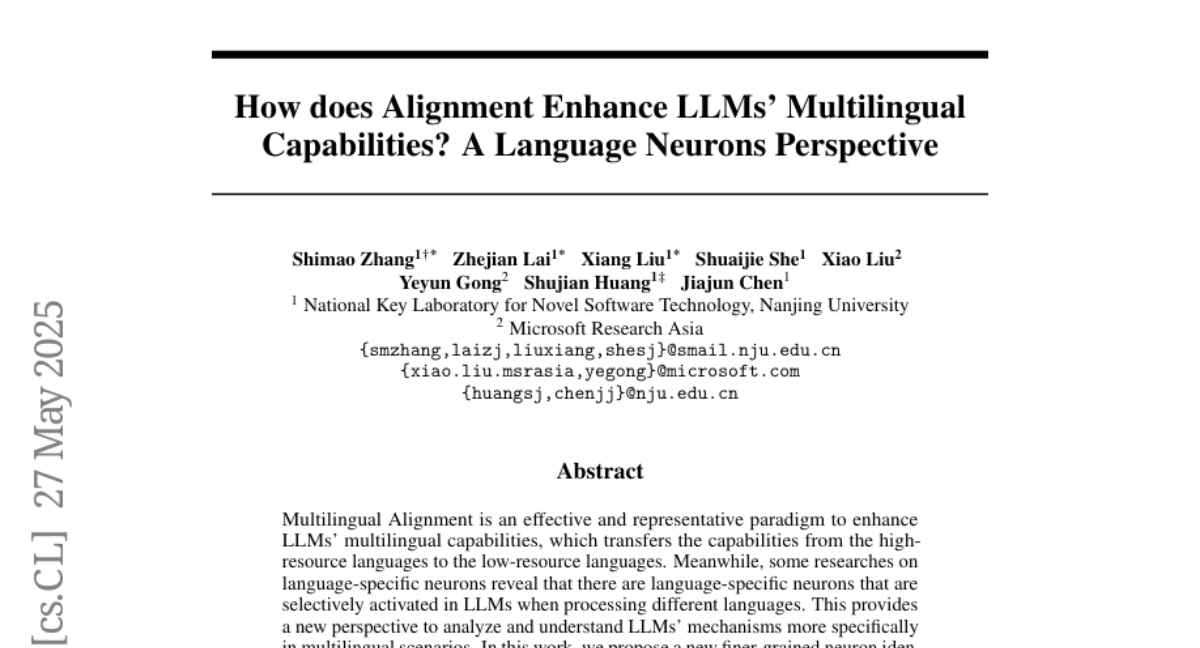How does Alignment Enhance LLMs' Multilingual Capabilities? A Language Neurons Perspective
Shimao Zhang, Zhejian Lai, Xiang Liu, Shuaijie She, Xiao Liu, Yeyun Gong, Shujian Huang, Jiajun Chen
2025-05-28

Summary
This paper talks about how aligning large language models, or LLMs, can make them better at understanding and using different languages by looking closely at the 'neurons' inside the model that handle specific languages or work across all languages.
What's the problem?
The problem is that while LLMs are supposed to work in many languages, it's not clear exactly how or why alignment training helps them get better at switching between languages or understanding them equally well.
What's the solution?
The researchers developed a detailed method to find which parts of the AI model are responsible for certain languages and which parts work for any language. They then studied how aligning the model affects its ability to understand, reason, and produce text in multiple languages.
Why it matters?
This matters because understanding how LLMs handle different languages can help make these models even better at translating, chatting, or answering questions in any language, making technology more accessible and useful for people all over the world.
Abstract
The research proposes a finer-grained neuron identification algorithm for detecting language-specific and language-agnostic neurons in LLMs, and investigates the impact on multilingual alignment and capabilities through analysis of multilingual understanding, shared semantic reasoning, multilingual output transformation, and vocabulary space outputting.